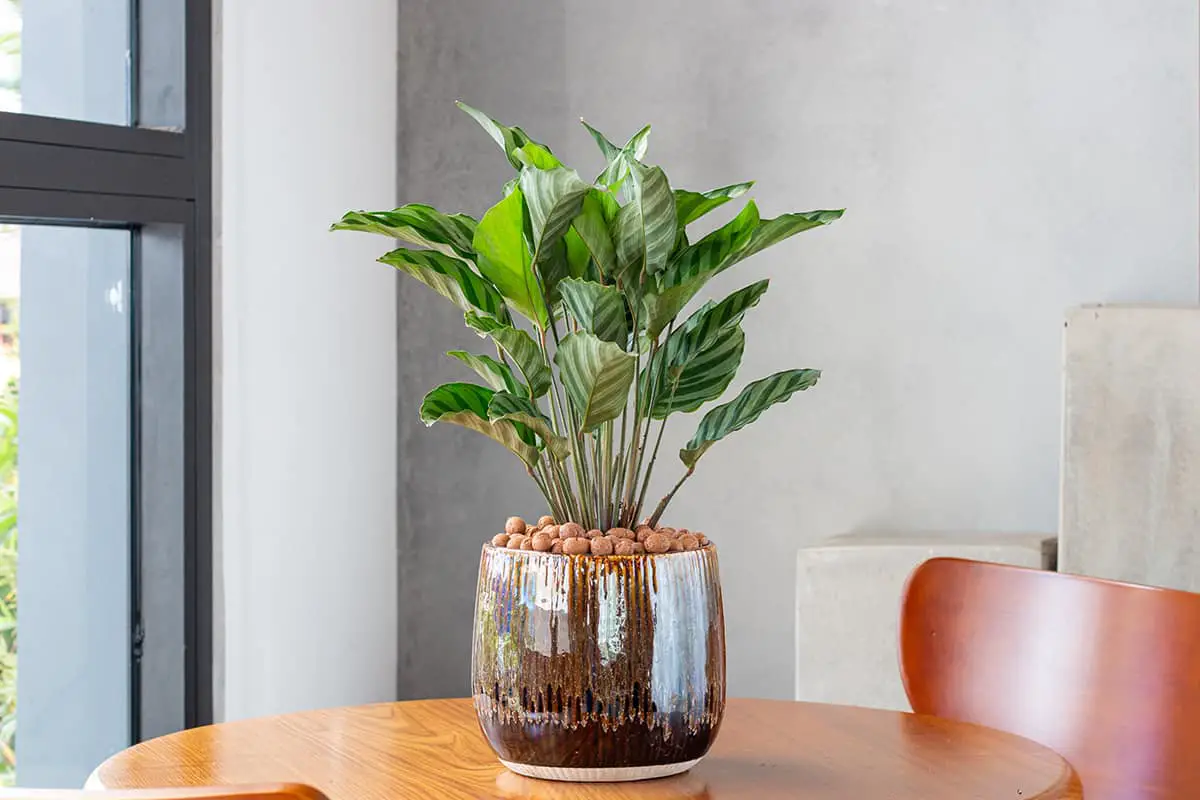You just noticed the leaves of your Calathea curling despite your best efforts to keep it healthy. This tropical plant, known for its striking leaf patterns and colors, demands attention to detail when it comes to care. Understanding the nuances of its needs can be the difference between a flourishing plant and a faltering one. Here’s a straightforward guide to mastering the care of your Calathea.
| Common Name | Calathea |
| Botanical Name | Calathea spp. |
| Family | Marantaceae |
| History & Origin | Native to tropical Americas |
| Plant Type | Evergreen, perennial houseplant |
| Mature Size | Up to 2 feet tall and wide |
| Sun Exposure | Prefers low to medium indirect light |
| Soil Type | Well-draining, peat-based potting mix |
| Soil pH | Slightly acidic to neutral (6.0 – 7.0) |
| Temperature | Thrives at 65°F to 75°F (18°C to 24°C) |
| Watering | Keep soil consistently moist but not waterlogged |
| Fertilizing | Fertilize monthly during growing season, less in winter |
| Bloom Time | Rarely blooms indoors |
| Flower Color | Generally inconspicuous |
| Hardiness Zone | Not applicable for indoor plants |
| Toxicity | Non-toxic to pets and humans |
| Common Problems | Leaf curling, brown tips, pests |
Table of Contents
Light
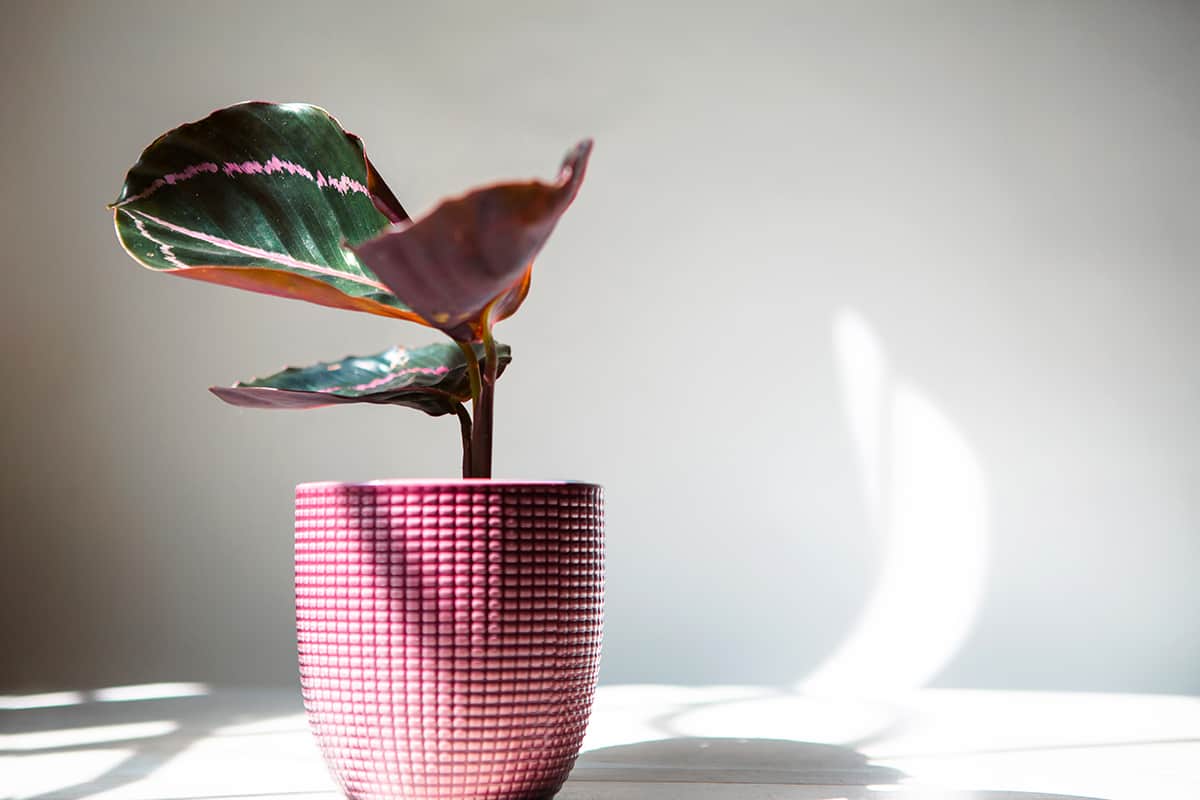
These plants need bright, indirect light to maintain their vibrant leaf patterns. Direct sunlight can fade the leaves, causing a loss of the distinct markings Calatheas are known for.
Find a spot in your home that receives filtered light. A north-facing window or a position near an east-facing window works well. If you only have west or south-facing windows, use sheer curtains to shield your Calathea from harsh rays.
Low light conditions can also be harmful. Calathea leaves may lose their luster and vibrant colors without adequate light. Keep your plant in a well-lit room, but away from direct sunlight to strike the right balance. If natural light is limited, consider supplementing with grow lights.
Adjust your plant’s position as seasons change. The intensity of sunlight varies throughout the year, so what works in summer may not suffice in winter.
Soil
You’ll need a soil mix that promotes proper drainage. Poor drainage can lead to root rot, a common problem in Calathea.
Choose a potting mix with good aeration. A mixture of peat moss, loam, and perlite or sand works well. This combination helps maintain the right moisture balance. Ensure the soil’s pH level is between 5.5 and 6.0 for optimal growth.
To avoid water stagnation, select pots with drainage holes. Place the plant in an area free from drafts and temperature swings to help it thrive. Soil that is consistently moist but not waterlogged provides a favorable environment for your Calathea.
Watering
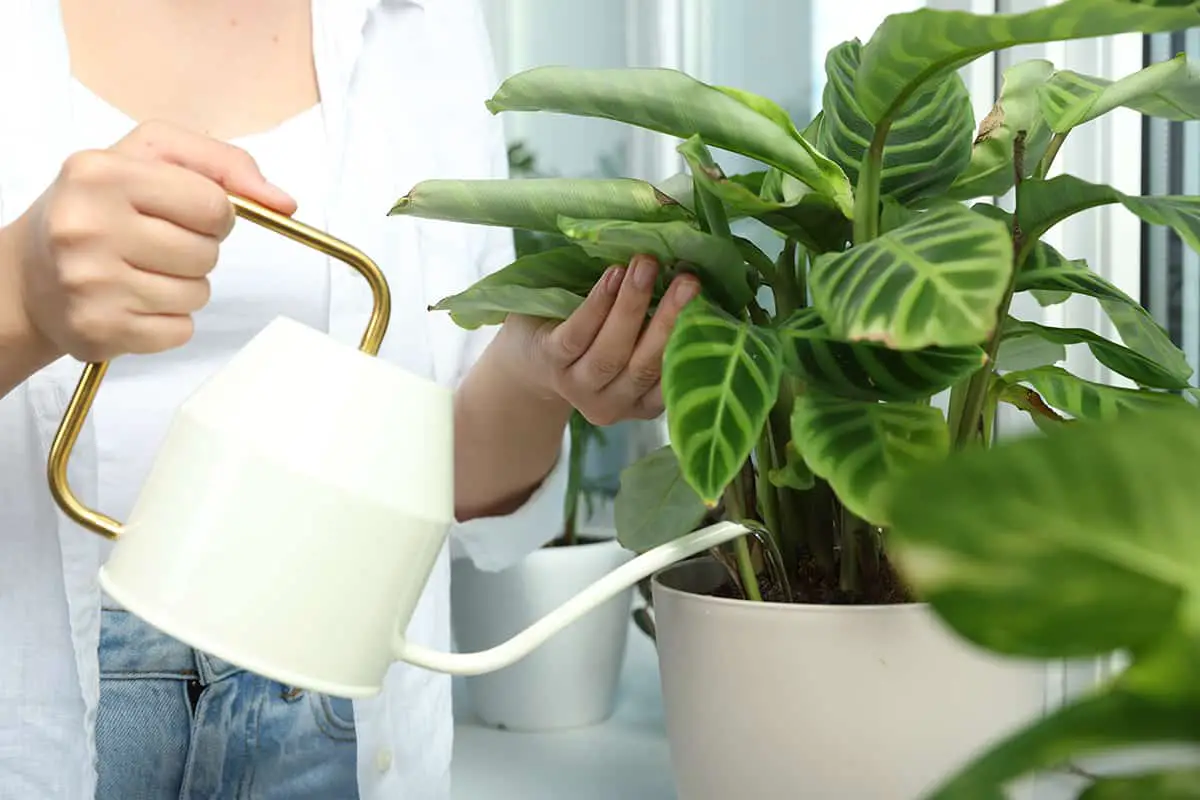
Calathea plants require consistent moisture. You need to keep their soil damp but not waterlogged. Test the soil with your finger; if the top inch feels dry, it’s time to water your Calathea. Use room-temperature water for hydration. Cold water can shock the roots and cause leaf damage.
Tap water can contain minerals unsuitable for Calathea. If you notice browning leaf tips, it could point to high fluoride levels. For the best care, use filtered or distilled water. Ensuring the water quality can prevent the leaves from browning and maintain their vibrant patterns.
In winter, water your Calathea less frequently. The plant’s growth slows down and requires less moisture. Always check the soil before watering.
Temperature and Humidity
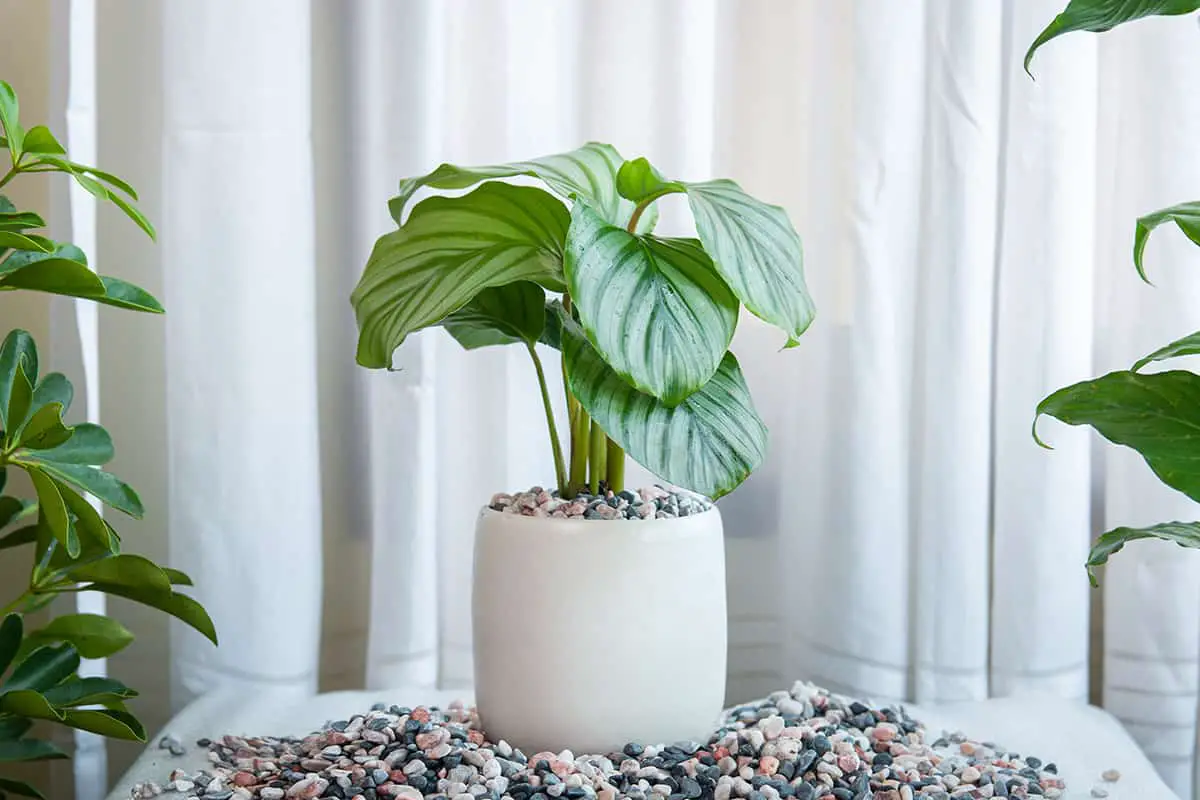
Calathea plants thrive in warm and humid conditions. Your Calathea prefers temperatures between 65-85°F (18-29°C). It’s important to keep your plant away from drafts and sudden temperature changes, as these can harm the plant.
High humidity is key to Calathea care. You should aim for a humidity level of 60% or higher. To increase humidity, place your plant on a tray of wet pebbles or use a humidifier. Regular misting also helps, but do so with care to avoid leaf fungus.
Fertilizer
During their growing season, which spans from April to August, feed your Calathea monthly. Use a balanced, water-soluble fertilizer diluted to half the recommended strength. Excess fertilizer can lead to a build-up of minerals that may harm the plant, so always err on the side of caution with application rates.
Your Calathea prefers a consistent fertilizer schedule. Ensure the soil is slightly moist before applying fertilizer to avoid root burn. In the cooler months of fall and winter, reduce feeding as the plant’s growth naturally slows down. During this time, you can fertilize every other month or skip it entirely until spring.
For optimal health, your Calathea’s soil should maintain a pH between 5.0 and 6.5. Regularly check the pH level to prevent nutrient lock-out, which can occur if the soil becomes too alkaline or acidic. Adjust the pH as needed depending on your specific Calathea species.
Choose a fertilizer that contains all the necessary micronutrients, including iron, magnesium, and calcium. These help keep the Calathea’s leaves vibrant and healthy.
Propagation

When growing Calathea, propagation through division is a common method. In the early spring, you can propagate your Calathea to encourage new growth or to create additional plants. Begin by removing your Calathea from its pot, and gently separate the root ball to find natural divisions. Cut through the roots carefully. Ensure each new section has roots and leaves.
Next, plant the divisions in fresh potting soil, and give them moderate light and humidity. Water these new plantings regularly but avoid overwatering. The soil should remain moist, not soggy. Mist the leaves to maintain humidity. This supports the new divisions as they establish themselves.
Calathea can be quite sensitive; thus, handle them gently during the division process. If you are new to this, learning the specifics of Calathea propagation will help you gain the confidence to perform this task correctly. Success in propagation results in the growth of healthy and vibrant Calathea plants that continue to adorn your space.
Pruning
Pruning your Calathea ensures it grows healthy and looks its best. Remove dead or yellowing leaves at their base to maintain its appearance. Use sharp, sterilized scissors for clean cuts without damaging the plant.
In spring, assess your Calathea’s shape. Trim any excessive growth to encourage a fuller plant. Cut just above the leaf nodes, the spots where leaves attach to the stem. This promotes new leaves to sprout.
During pruning, check for signs of disease or pests. If you spot these, prune affected areas to prevent spread. Dispose of the removed parts to keep your environment clean.
Always keep the plant’s natural shape in mind. Do not overprune, as this can stress your Calathea. Prune only as needed to keep it tidy and healthy.
Potting and Repotting
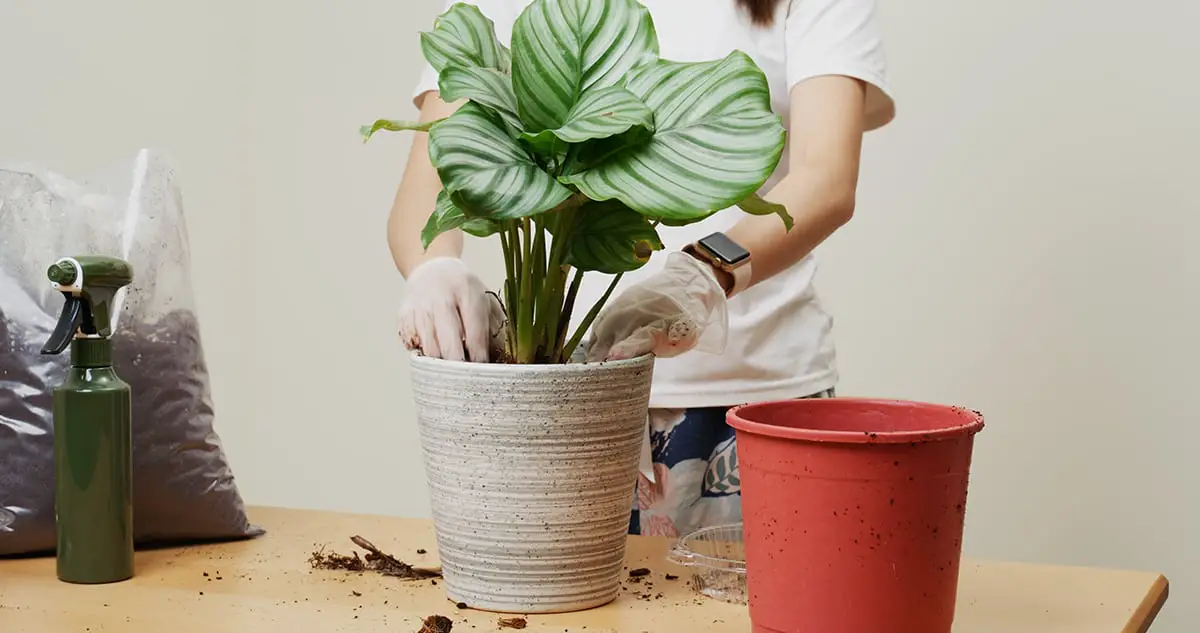
To start, choose a pot with drainage holes for your Calathea. This allows excess water to escape and prevents root rot. Your pot should be only one to two inches larger than the current one, as too much space can impede growth.
Use a well-drained potting mix when planting your Calathea. A mixture with peat moss helps retain the necessary moisture without becoming waterlogged. Add new potting soil to the bottom of your new pot, and carefully place the plant inside. Fill the sides with more soil, and lightly press to secure.
If your Calathea shows signs of distress, like a salty crust on the soil surface or if it starts drying out quickly, it may be time to repot. Additionally, small leaves or a lack of new growth indicate it’s time to give your plant a new home. When repotting, transfer the plant into a slightly larger container to encourage growth.
After repotting, water your Calathea to help it settle in its new pot. Hold off on fertilizing for about a month to avoid stressing the roots.
Common Problems
Calatheas often face issues that stem from their environment. One common problem is brown leaf edges. This usually indicates low humidity or over-watering. Ensure your Calathea is in high humidity and the soil is moist, not wet.
Yellowing leaves can signal a variety of issues. It might be over-watering, under-watering, or lack of nutrients. Check your watering routine and consider a balanced fertilizer. Make adjustments as needed for plant health.
Pests such as spider mites also trouble Calathea plants. These tiny creatures thrive in dry conditions. To combat them, maintain a humid environment and inspect leaves regularly.
Drooping leaves suggest your Calathea needs more water. They respond dramatically to under-watering. Be mindful of soil moisture and water regularly.
Root rot is a less obvious but serious problem. Caused by constant wet soil, it requires immediate action. You may need to repot your plant in fresh soil and trim damaged roots. Remember to let the soil dry slightly between waterings.
Fungal infections often manifest as spots on leaves. Good air circulation helps prevent these. Remove affected leaves to keep your plant healthy. With the right conditions, Calathea grows beautifully at home. Stay attentive to these common issues for a thriving plant.
Calathea Varieties
Calatheas offer a remarkable range of leaf patterns and colors. Each variety showcases a unique aspect of this stunning plant group.
Calathea Lancifolia (Rattlesnake Plant)
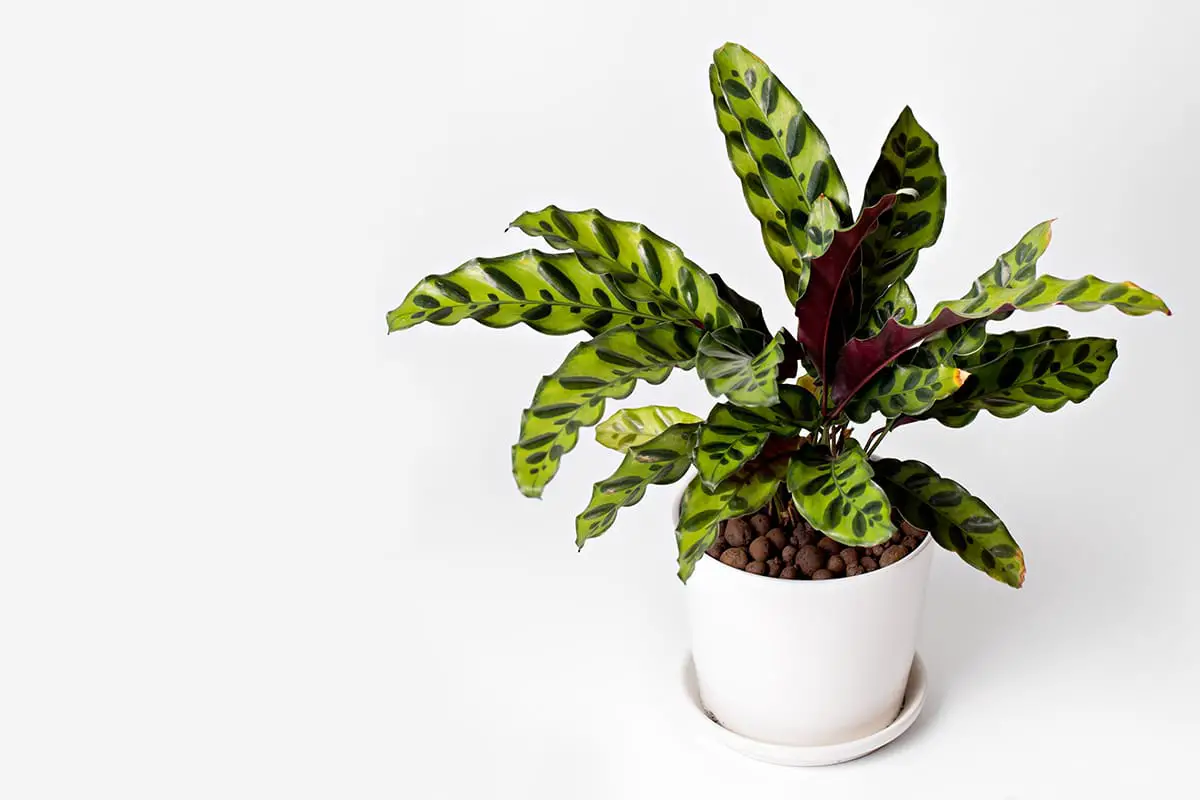
Your Calathea Lancifolia, also known as the Rattlesnake Plant, features long, wavy green leaves with distinctive dark spots. Its purple undersides add a striking contrast.
Calathea Ornata (Pinstripe Calathea)
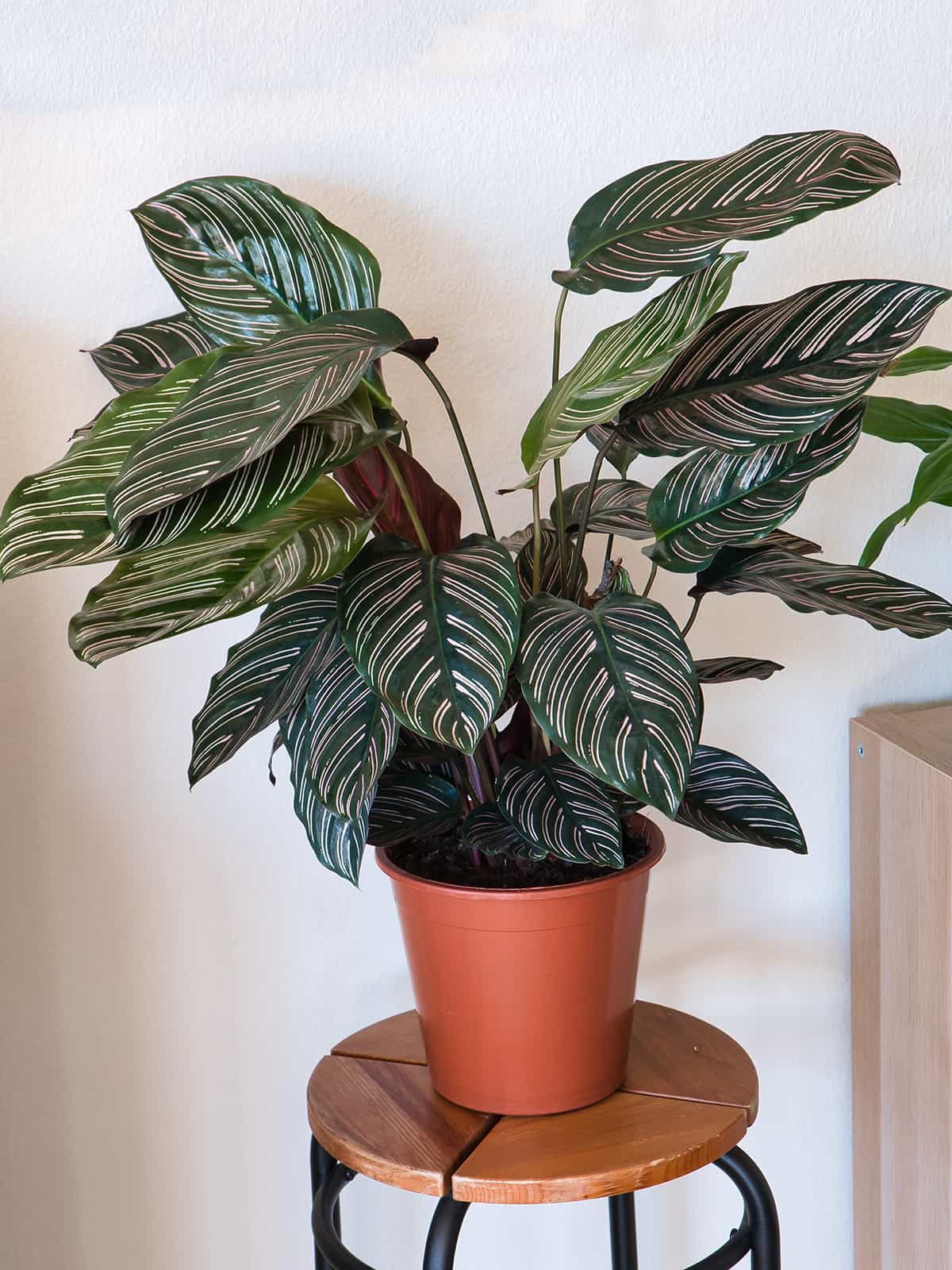
The Calathea Ornata, or Pinstripe Calathea, displays oblong dark green leaves with precise pink stripes. This Pinstripe Calathea prefers bright indirect light and a consistent watering schedule for optimal growth.
Calathea Zebrina (Zebra Plant)
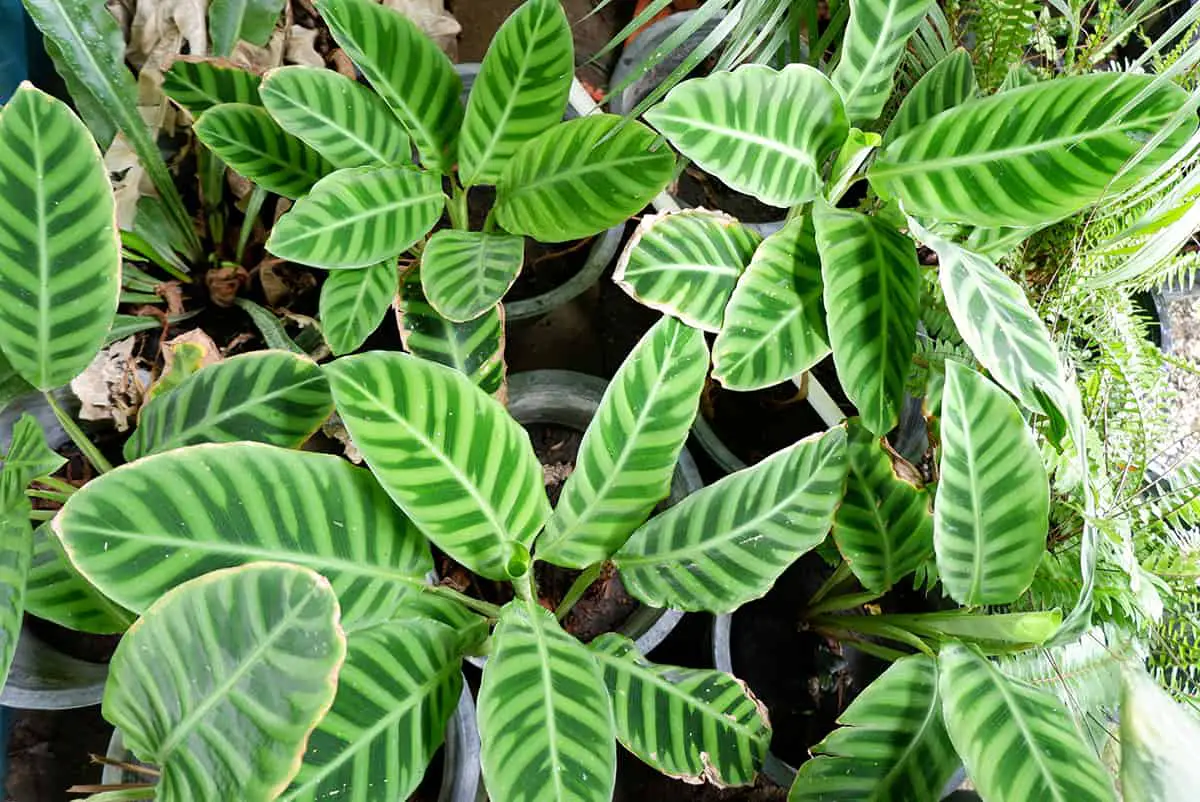
The Zebra Plant, known scientifically as Calathea Zebrina, offers a dazzling pattern resembling a zebra’s stripes. This variety enjoys bright, indirect sunlight and evenly moist soil to maintain its vibrant appearance.
Calathea Roseopicta (Rose Painted Calathea)
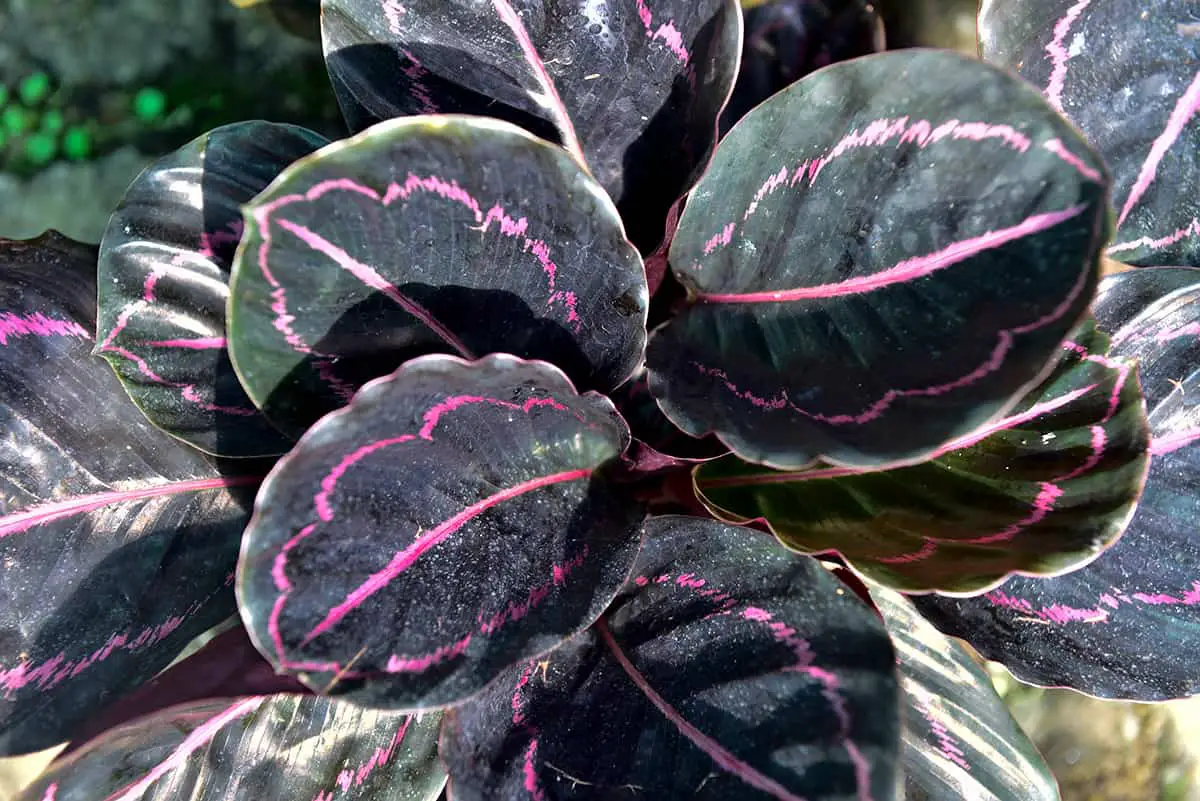
Calathea Roseopicta, or Rose Painted Calathea, stands out with its lush green leaves and pink-hued center. It requires care similar to other varieties, including indirect light and frequent misting to mimic its natural tropical environment.
Calathea Makoyana (Peacock Plant)
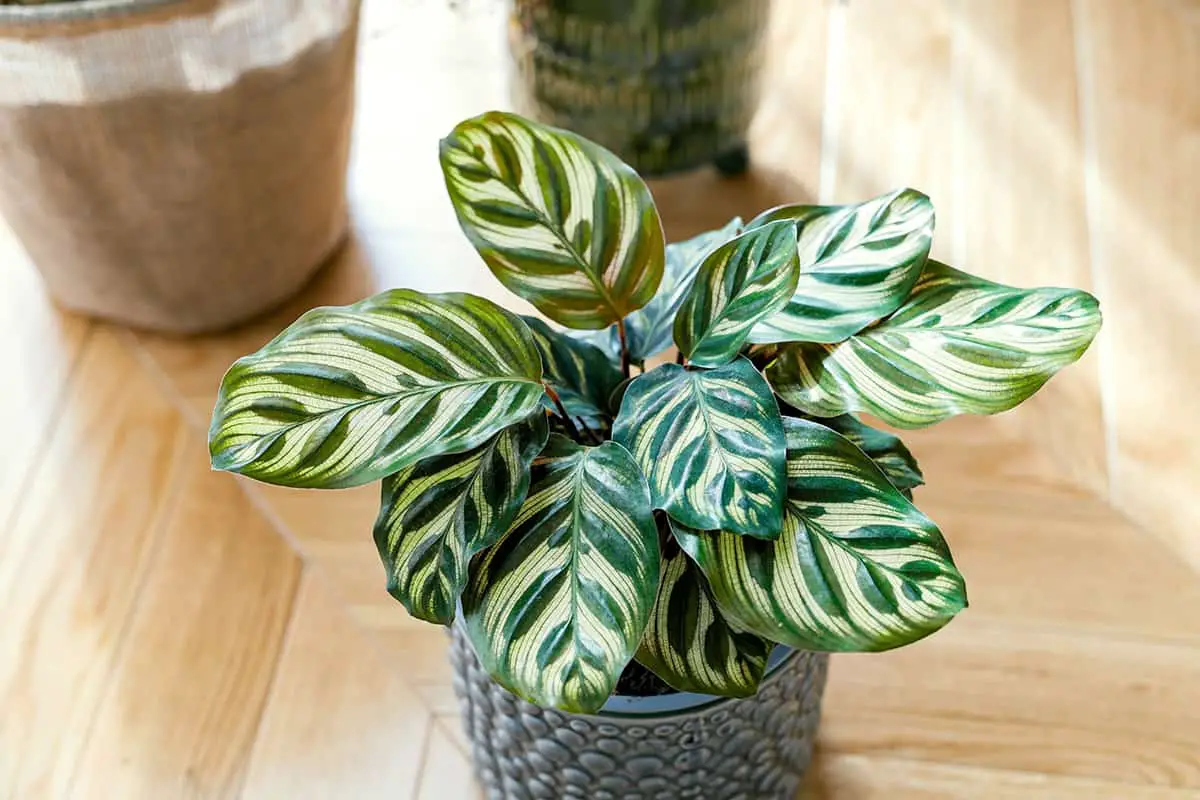
Your Peacock Plant, or Calathea Makoyana, features rounded leaves with a mosaic of green and creamy white accents. The Peacock Plant needs moderate light and high humidity to keep its leaves from drying out.
Calathea Warscewiczii

The Calathea Warscewiczii has velvety foliage with two-toned green patterns. This variety is one of the larger species, making a statement with its lush, tropical look.
Frequently Asked Questions
Calathea plants often spark questions due to their distinct and striking foliage. Your queries about their care are answered below, ensuring your Calathea thrives year-round.
How do I keep my Calathea leaves from curling?
Leaf curling in Calathea can indicate improper watering. Ensure you water your plant when the top inch of soil feels dry. Avoid over-watering as it can lead to root rot and stress the plant, making leaves curl.
What are the ideal conditions for Calathea care in winter?
During winter, Calathea needs warm surroundings with temperatures above 55 degrees. They also need reduced watering because growth slows and excess water can harm them. Keep them away from drafts and cold windows.
Where should I place my Calathea for optimal growth?
To help your Calathea grow well, position it in a spot with bright, indirect light. Direct sunlight can fade the colored patterns on your plant’s leaves. A north-facing window or a room with filtered light is often ideal.
Is it necessary to trim brown tips off of Calathea leaves?
Trimming brown tips can prevent further discoloration and improve the plant’s appearance. Use sterilized scissors to cut the brown tips off, following the natural leaf shape. Regular trimming maintains plant health and aesthetics.
